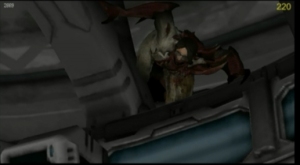Is sustained thought lost? Are youth caught by the grandeur of the Internet,WikiLeaks, Facebook, Twitter – attention span is set on checking iPhones, Androids and BlackBerrys ever few minutes for emails, texts, and so on?
It would appear as though people have stopped reading and have opted for fragmented, sliced, meta-narratives. Or just maybe… technology has shifted the way in which we read, communicate, write and or think. In the article, Digitization: The last word? No. But the last book readers, Geoff Pevere has identified a common issue that teachers, professors, and parents alike may have noticed – reading has slowly lost momentum or interest. Shrinking English departments are evident of the nature of how youths and/or perhaps how people in general have forgotten the love of a good book. To be awe inspired, to be placed into an imaginary world filled with adventures, heartache and to travel with a protagonist and undergo a hero’s journey is what it means to read a good book.
It is with sinking irony that I (a major in English and Digital Communication and Culture) can see both sides -I feel that perhaps the manner to reach and engage people is no longer through the classical methods of reading a book. In my teen years, I loved books- I was engrossed in tragedies (often end in funerals), comedies (often end in weddings) and learning the archetypes that follow short stories and plays. And to this day it is a continued passion of mine. Though not everyone can enjoy the dry British humour of Douglas Adams, nor appreciate a mock epic by Alexander Pope – many of those ideas persist – laughter, freedom of speech (we forget it was never always free – and in some places still isn’t), dramatic irony, satire, commentary on politics, current events and history. Truly to understand why people wrote during the times is what makes their work important, relevant and engaging. If it’s not properly explained – how can it be expected that new audiences would care?
Take Twitterature – when a book has been condensed into the gist of a story – no depth truly – it is there to complement the classic, not replace. Perhaps, we must learn to engage people through the preferred mediums, notable historical figures, characters, authors should now exist on Facebook – and perhaps allow us to follow them on Twitter see their networks on LinkedIn. This is what we have come to understand of our world, weak and strong ties are more visible – we love knowing that we are within 6 degrees of our movie stars, politicians, and royalty.
Books do not need to be replaced, but the methods of engagement and learning do. We cannot ignore the fact that behaviours in the classroom have changed, and to ignore it is to simply allow those who have potential to lay on the waste-side.




